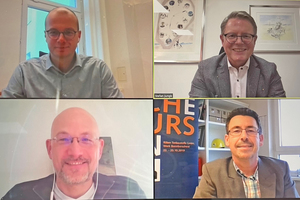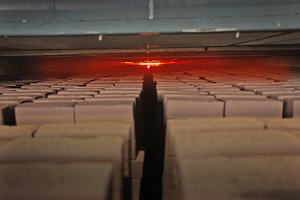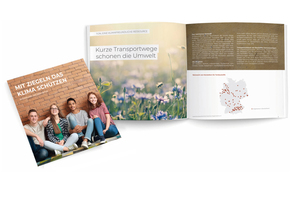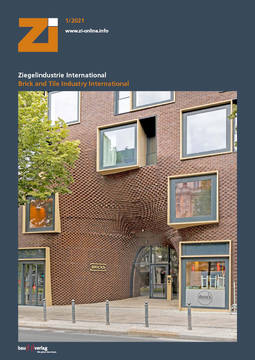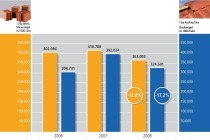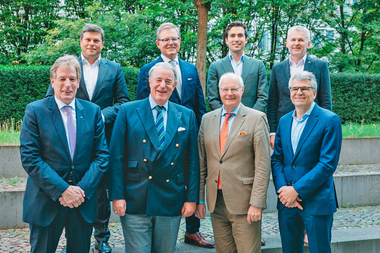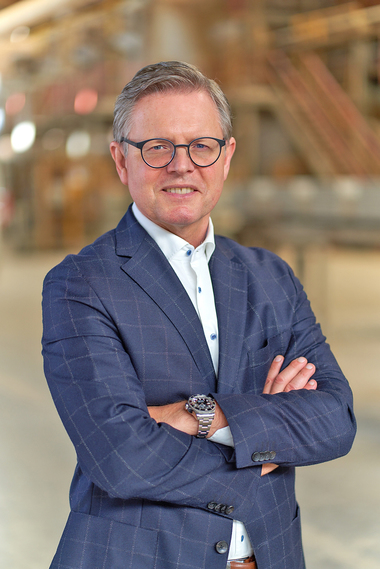“Concerted effort to promote clay bricks and roofing tiles”
Federal Association of the German Brick and Tile Industry reforms its structures
With the elections for the Federal German government as well as six German state governments in 2021, the parliamentary balance in Germany will be realigned for years to come. With the announcement of its Green Deal back in 2019, the EU Commission under the leadership of Commission President Ursula von der Leyen made clear what immense challenges especially energy-intensive industry sectors will face on the road to climate neutrality. To represent the interests of the clay brick and tile industry more efficiently, the Federal Association of the German Brick and Tile Industry (BVZI) has decided to reorganize its structures. The Zi editors have discussed this reform with Stefan Jungk and Dr Matthias Frederichs, President and Secretary General of the BVZI, respectively.
SJ: In 2020, the clay brick and tile industry not only proved an anchor of stability in economic respects. Particularly in times with millions of people having to work short-time hours, I am delighted as an entrepreneur that the industry has not been seriously impacted and has carried on producing roofing tiles and masonry bricks. There has been some only isolated exceptions, usually associated with specific local incidences of infection. By and large, it can be said that the business owners and managers as well as the employees have clearly proven that they can rely on each other even in turbulent times, and that is good.
MF: Unfortunately, we don’t yet have the final figures for 2020. But with regard to the mood within the sector, I can say that as an industry, in view of the difficult circumstances, we as an industry have coped solidly throughout the year. Nevertheless, we are not ruling out any delayed consequences of Covid-19. But what was confirmed last year is that despite times of crisis, building carried on, or to put it another way, acted as the mainstay for the economy. Here, as the clay brick and tile industry, we are happy to do our bit.
SJ: Although large parts of the German economy is still struggling to survive, with regard to climate policy measures, the thumbscrews were really tightened in 2020. For us, the Green Deal is, however, not only a long-term but a short-term challenge. Coming out of Brussels, the climate policy goals have not only been raised for 2050, but for 2030, too. As a capital-intensive industry, we need long-term planning reliability, ten years are just about a short hop for us. Now, by 2030 we have to save around 15 percent more CO2 then we have been promised by the policy-makers for many years. Parallel to this, we cannot allow ourselves to lose sight of the perpetual goal of competitiveness.
MF: Because of the steep rise in CO2 costs, in the forthcoming years under presumably the same internationally uniquely high burden of duties, companies will have less urgently needed capital available for investment. It is therefore all the more important to stabilize carbon leakage protection in the long term and continue to fight for a balanced impact analysis of the numerous climate policy plans.
MF: In this respect, we are currently still right in the middle of the process. Probably in February, we shall present our roadmap to climate neutrality by 2050. On the basis of three scenarios, we shall show on which technical conditions and with a view to investment and CO2-avoidance costs, how it can be possible to reach this goal. Even if I don’t want to anticipate the final results, I can already say that the last steps with regard to climate neutrality were the most difficult and expensive for us. One thing is already certain. More than ever, we remain competitive thanks to the quality and properties of our products, our service and excellent contact to our customers.
SJ: The roadmap will make things clearer with regard to what climate neutrality in 2050 will actually mean for the clay brick and tile industry. Irrespective of that, we are relying on policymakers to guarantee competitiveness in the form of openness in terms of technology, long-term planning and helpful support, but not to start steering the building materials industry from above, for example with quotas. Close coordination between industry and policymakers is absolutely essential to ensure competitiveness in the years to come.
SJ: We shall as an industry still find ourselves in turbulent times even after coronavirus. It is all the more important that we all move closer together, create lean structures and come together under one roof. Things have worked well in the past, however, a centralized steering was lacking. In the past years, we have as an industry left potential to fall by the wayside with too many simply following their own agenda.
MF: Precisely, at first glance nothing will effectively change in the way the different organizations and societies work. Behind the scenes, however, we shall be coordinating the working processes more ideally with each other, so that we work more efficiently overall and, with a concerted effort, promote clay bricks and tiles on numerous different levels.
MF: As of 1 January 2021, the activities of the Masonry Bricks Working Group and Ziegel Zentrum Süd have been formally transferred in terms of legal status, content and personnel to the Federal Association. The old societies were dissolved at the end of 2020. At the same time, the interests of the clay block branch have been concentrated in a specialized section within the BVZI. Besides division-specific technical lobbying, Germany-wide university work in the teaching of construction engineering and architecture now forms part of the Federal Association’s range of services. Otherwise different the bodies of the industry have been combined to proactively address future-oriented topics like sustainable building, resource efficiency and climate protection as part of a newly defined agenda.
SJ: We have succeeded in breaking up and modernizing old, one might even say crusty association structures. With the incorporation of Ziegel-Zentrum-Süd into the Federal Association, it will be easier for us to roll out the so very important work in universities and colleges across Germany. In addition, with our Entrepreneur Group, we have at last a forum to respond with greater agility to current challenges and to present a more united front to the market and policymakers.
MF: In 2021, besides the Federal German election, another six German state parliament elections are taking place. So there will be a lot going on politically in the parliaments and moreover, the milestones for the coming years will be set. Sustainability, certainly, is playing a major role, but affordable construction and rents are becoming more and more important for the success of the political parties. Our goal is to link these different needs together, for example in energy-oriented building refurbishment or in the call for an unbiased approach to technology in the selection of building materials. The Corona pandemic will certainly stay with us for the entire year. Insofar it cannot be ruled out that the political priorities will shift faster than they have done before.
SJ: From a personal point of view, I am excited about the parliamentary election in my own state, Rhineland-Palatinate. From an entrepreneurial point of view, I should like to add that quite a bit has changed on the German housing market over the past year: The corona crisis with millions of people in quarantine and a large part of the economy in home office has rekindled in many people a desire for their own home with a house and garden. Most people are again wanting a (pitched) roof and their own four walls – ideally with roofing tiles and heat-insulating masonry bricks. To achieve that nationwide, it is important that building can continue. Many initiatives, I thinking here, for example, about the extra child allowance for homebuilders, are heading into the right direction, but there is still a housing crisis, building land is more expensive than ever and efficiency in mobilizing the availability of building land can be improved. As President of the Federal Association of the German Brick and Tile Industry, I never tire of saying that we are ready to give even more people a home in 2021. For what could be better than living in a brick-built house?

